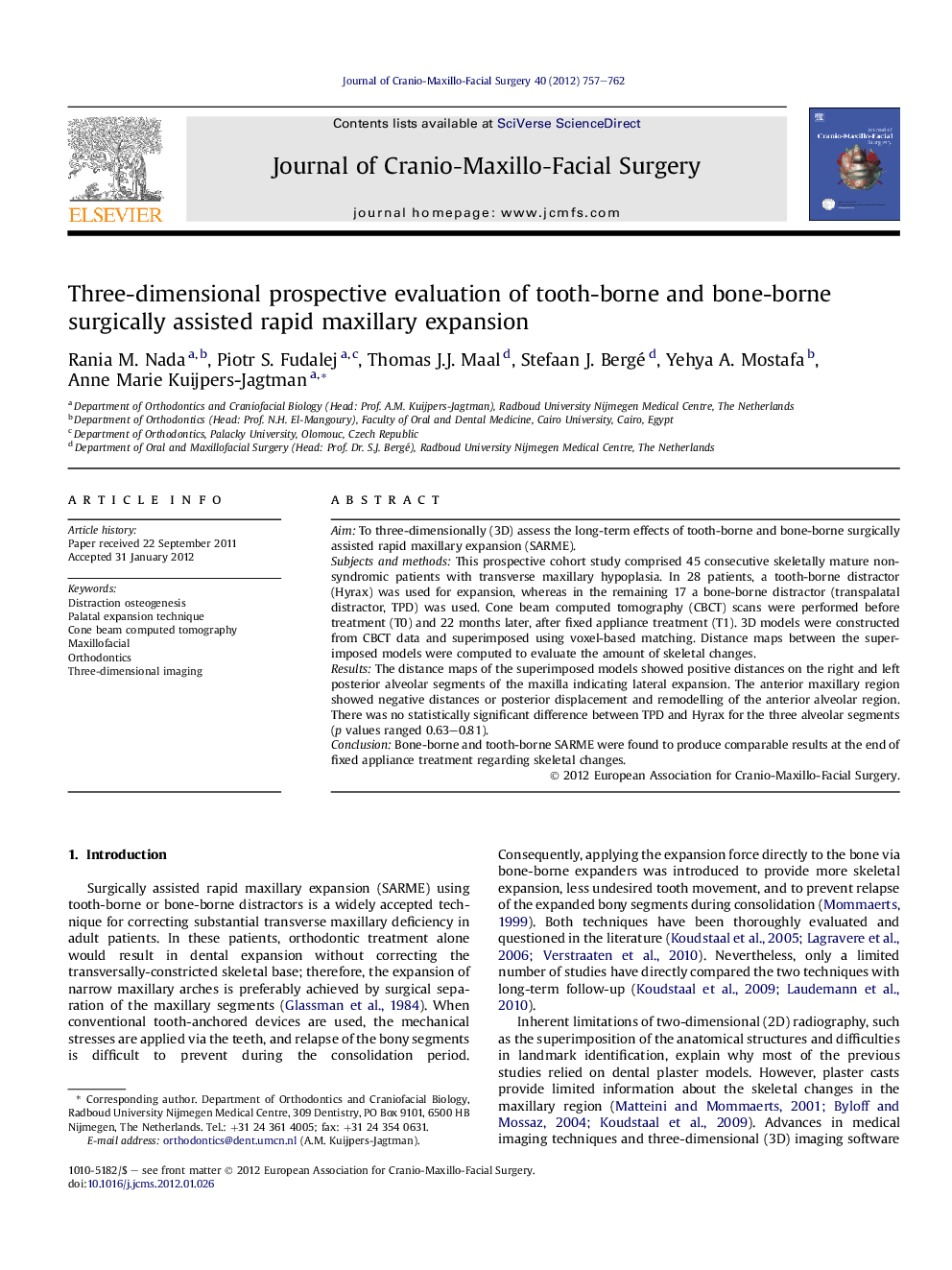| Article ID | Journal | Published Year | Pages | File Type |
|---|---|---|---|---|
| 3143380 | Journal of Cranio-Maxillofacial Surgery | 2012 | 6 Pages |
AimTo three-dimensionally (3D) assess the long-term effects of tooth-borne and bone-borne surgically assisted rapid maxillary expansion (SARME).Subjects and methodsThis prospective cohort study comprised 45 consecutive skeletally mature non-syndromic patients with transverse maxillary hypoplasia. In 28 patients, a tooth-borne distractor (Hyrax) was used for expansion, whereas in the remaining 17 a bone-borne distractor (transpalatal distractor, TPD) was used. Cone beam computed tomography (CBCT) scans were performed before treatment (T0) and 22 months later, after fixed appliance treatment (T1). 3D models were constructed from CBCT data and superimposed using voxel-based matching. Distance maps between the superimposed models were computed to evaluate the amount of skeletal changes.ResultsThe distance maps of the superimposed models showed positive distances on the right and left posterior alveolar segments of the maxilla indicating lateral expansion. The anterior maxillary region showed negative distances or posterior displacement and remodelling of the anterior alveolar region. There was no statistically significant difference between TPD and Hyrax for the three alveolar segments (p values ranged 0.63–0.81).ConclusionBone-borne and tooth-borne SARME were found to produce comparable results at the end of fixed appliance treatment regarding skeletal changes.
